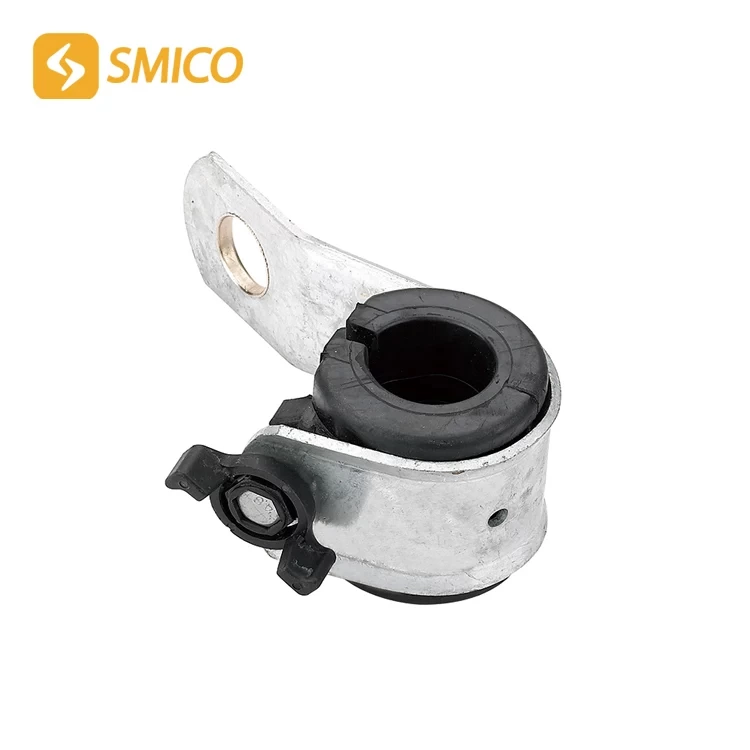Fretting Wear Characteristics Of Overhead Wires With Protective Wires Suspended By Suspension Clamps
7. The micro-motion wear of the conductor will change the gap between the outer aluminum strands of ab cable suspension clamp, and the gap in some areas will become smaller. This is caused by the debris filling caused by wear and the plastic deformation of the aluminum strands.
Feature Detailed Explanation: The change in the gap between the outer aluminum strands of the conductor and the reasons are explained. The debris filling and plastic deformation cause the gap in some areas of abc suspension clamp to become smaller.
8. When the overhead conductor with protective wire is micro-motion worn, the contact edge between the conductor and the protective wire will slightly lift up. This is caused by the stress concentration at the contact edge and the uneven friction during the micro-motion process.
Feature Detailed Explanation: The wear characteristics of the contact edge and the stress and friction factors generated are described. Stress concentration and uneven friction cause the contact edge to lift up.
9. After micro-motion wear, the distribution of the oxide layer on the surface of the conductor j hook suspension clamp becomes uneven, and the oxide layer is thicker in the area with severe wear. This is because the wear destroys the original oxide layer of suspension clamp for ab cable, and the new oxidation process has different developments in different degrees of wear areas.
Detailed explanation of features: explains the distribution changes and causes of the oxide layer on the surface of conductor suspension clamp for abc cable. The damage of wear to the original oxide layer causes the new oxidation process to be different in different areas.
10. The micro-motion wear of the overhead conductor with protective wire at suspension clamp for lt ab cable will reduce the elasticity of the protective wire to a certain extent. This is because the repeated stress during the micro-motion process has changed the material structure of the protective wire.
Detailed explanation of features: points out the changes in the elasticity of the protective wire and the causes. The repeated stress has changed the material structure of the protective wire, thereby reducing the elasticity.
11. The wear depth of the contact area between the conductor and the protective wire shows an uneven distribution. The wear depth near the fixed point suspension clamp is relatively large. This is because the stress and micro-motion amplitude in this area are relatively large.
Detailed explanation of features: explains the distribution characteristics and causes of the wear depth. The large stress and micro-motion amplitude near the fixed point lead to a large wear depth.
12. When the overhead conductor with protective wire is micro-worn, some tiny cracks will appear on the surface of the conductor. These cracks usually start to expand from scratches and other damages. They are due to the alternating stress during the micro-motion process.
Detailed explanation of characteristics: describes the characteristics of cracks on the surface of the conductor and the reasons for their generation and expansion. Alternating stress causes cracks to expand from scratches.
13. Fretting wear will cause the conductivity of the conductor to decrease slightly in local areas. This is because wear causes the physical structure of the conductor surface to change, increasing the resistance of current transmission.
Detailed explanation of characteristics: points out the changes in the conductivity of the conductor and the reasons for it. Wear changes the surface structure of the conductor, increases the resistance and reduces the conductivity.
14. The friction between the protective wire and the conductor of the overhead conductor with protective wire suspended by the suspension clamp will fluctuate during the fretting wear process. At the beginning, the friction gradually increases, and then decreases due to the lubrication caused by wear.
Detailed explanation of characteristics: explains the characteristics and reasons for the change of friction. At the beginning, the rough friction surface increases the friction, and the wear debris acts as a lubricant to reduce the friction.

